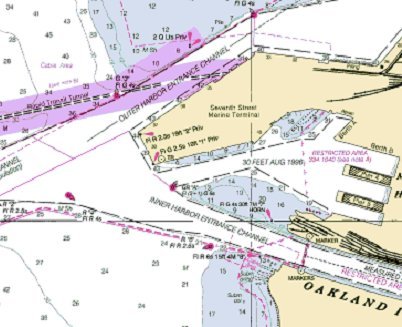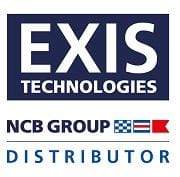ECDIS (Electronic Chart Display & Information System) & official chart requirements

SOLAS requires certain ships to meet International Maritime Organization (IMO) provisions defined in the 1974 International Convention for the Safety of Life at Sea (SOLAS,) together with its amendments.
IMO SOLAS V/19 outlines requirements for the types of charts ships are required to carry:
2.1 All ships irrespective of size shall have:
2.1.4 Nautical charts and nautical publications to plan and display the ship’s route for the intended voyage and to plot and monitor positions throughout the voyage. An electronic chart display and information system (ECDIS) is also accepted as meeting the chart carriage requirements of this subparagraph. Ships to which paragraph [2.10] applies shall comply with the carriage requirements for ECDIS detailed therein;
2.1.5 Back-up arrangements to meet the functional requirements of subparagraph 2.1.4, if this function is partly or fully fulfilled by electronic means*;
Footnote to regulation 2.1.4
*Paper nautical charts sufficient to meet the requirements of sub-paragraph .4 and regulation 27 may be used as a back-up arrangement for ECDIS. Other back- up arrangements for ECDIS are acceptable (see Appendix 6 to resolution MSC.232 (82), as amended.)
A majority of cargo ships, tankers, passenger ships, and mega yachts use electronic chart display and information systems (ECDISs). An amendment to SOLAS requires these vessels to use ECDIS as a primary means of navigation. By 2018, all such vessels will be required to use ECDIS. A graph of the ECDIS mandation timetable can be seen below.

It is not enough for a vessel to simply have an ECDIS on board. To be in compliance with SOLAS regulations and to pass port state inspections the ECDIS on a vessel must contain the appropriate electronic charts for the vessel's intended voyage. There are two types of electronic charts that an ECDIS can display: Raster Navigational Charts (RNCs) and Electronic Navigational Charts (ENCs,) otherwise known as vector charts. These charts are available via the Admiralty Raster Chart Service (ARCS) and Admiralty Vector Chart Service (AVCS) or another electronic chart service provider.


RNC (Raster Navigational Chart)
An RNC is a digital image originally scanned from paper charts into an electronic format. Geographic references are added to the electronic chart allowing it to refresh in real time, allowing mariners to identify and analyze chart data. Raster charts integrate with global positioning system (GPS) coordinates using raster chart display systems (RCDSs.)
Raster charts have a similar presentation and style of use to traditional paper nautical charts and maybe preferable to mariners who use paper nautical charts. Free weekly notice to mariner (NTM) updates are available to ensure chart information is accurate and reliable for mariners.
Raster Navigational Charts (RNCs) are a safe and reliable primary navigation alternative under certain conditions and subject to individual Port and Flag State approval, for example where electronic navigational charts (ENCs) don’t yet exist (see IMO resolution MSC 86 (70). Approved RNCs conform to the International Hydrographic Organization (IHO) Product Specification S-61. Large scale raster charts can help identify important information such as dredged depths and berth names that can be hard to find sometimes in ENC's.
Raster charts do have their disadvantages when compared to vector charts. Unlike an ECDIS operating in ENC mode, RNC mode operation allows for limited alarm and warning functionality. There is a finite amount of resolution because images are digitally scanned. Vector charts may show more dense information when used to zoom in. Raster charts are limited in their functionality in this regard. The overall usability of RNCs is less robust than ENCs. When using an ENC certain features may be turned off, to allow for a less cluttered view. Again, raster charts are limited in their functionality. Text on raster charts may be sideways or difficult to read. Text in vector charts always stays the right side up and easy to read.
Overall, while they do have some disadvantages raster charts are an excellent complementary source of chart data in conjunction with the use of vector charts to help the mariner safely navigate.
Raster Navigational Chart (RNC)

ENC (Electronic Navigational Chart)
ENCs or vector charts are required to be used if data is available. A vector chart is merely a representation of a of a database of information. All of the same information that is available on a raster chart is present, with many significant additions. The use of vector charts is preferable to raster charts. However, there are locations where vector charts are not available and crews must use raster charts so long as SOLAS provisions are adhered to.
An ENC contains more information than an RNC and has a slightly different look than a paper chart. Different objects on an ENC have attributes; by clicking on a vessel or lighthouse, for example, more information about the object will become available. It is recommended that ships equipped with ECDIS operate using ENCs. No electronic system is completely failsafe and it is always required to employ a second independent ECDIS, operating from a different power source or carry up-to-date paper nautical charts covering the entire route of the voyage.
Each object or feature on a vector chart has attributes that vary. These attributes can provide users further information than would be provided on a raster chart. For example an icon representing a lighthouse may be clicked upon and attributes of the lighthouse may be viewed.
Data for vector charts is collected and organized according to the S-57 data standard. A second data authentication and protection standard S-63 details security schemes for vector chart data. The data for these charts is produced by governmental bodies following International Hydrographic Organization (IHO) ENC product specifications. Vector chart data produced by organizations that do not meet these specifications should not be used.
Vector charts allow users much greater utility. There may be instances where a certain feature is of interest and other nearby features are cluttering the view. The user may turn off the features that are cluttering the view. Text may also be turned off.
Because a vector chart is a graphic representation of a database, there are far fewer limits. It is possible to zoom in on an area and gain more detail. It is also possible to zoom out, especially to get a look ahead. Viewing the path of route a significant distance ahead becomes cumbersome with the limited functionality of raster charts. Vector charts allow users to view the oncoming path with much greater ease.
Because of the increased amount of data available, ENCs are suited for use with alarms and warnings to alert crews of danger in the ship's path. Positions of features on vector charts use the World Geodetic System 1984 Datum (WGS84). This system is global navigation satellite system (GNSS) position compatible.
Electronic Navigational Chart (ENC)

Regular Updates Imperative
The vector and raster charts stored in an ECDIS must be updated regularly both to ensure that the most current data for marine navigational purposes is available and that the ECDIS is able to read the data that is supplied and function correctly.
Updates may be made automatically by network transmission or using a CD-ROM/Flash-drive. Mariners should consult with their electronic chart supplier for acquiring the necessary updates for their electronic chart portfolio.
There are instances where mariners may not be sure if the most recent update to the electronic charts in an ECDIS has been applied. Some types of ECDIS provide functionality to check which updates have been applied, while others do not. If there is any doubt it is possible to cross check charts with traditional sources of information such as notices to mariners or the bridge holdings management software to ensure that chart data is up to date.
It is also important to ensure that the ECDIS itself conforms to the most recent IHO S-63 1.1 standard if mariners intend to use S-63 1.1 authenticated ENC's. In order for these ENC's to load properly, the correct Public Key must be installed. New ECDIS's automatically contain the IHO Public Key needed to display S-63 1.1 ENC's. For older ECDIS's, mariners should check the current public key that is being used. Mariners will need to upgrade their ECDIS to the IHO Public Key if they have the PRIMAR Public Key installed. This information can be found in the ECDIS or from the manufacturer. Only approved and up-to-date ECDIS and electronic chart data should be used for marine navigation. If either is not available it is always better to revert to using up-to-date paper nautical charts as an immediate fix. Vessels who are required to have an ECDIS should consult with the ECDIS manufacture if the ECDIS is need of service.
The ECDIS provides a great amount of convenience and flexibility to mariners. Previous to its adoption by the industry, mariners were required to purchase charts beforehand, as well as keep an up-to-date inventory of charts mapping their complete route. Using an ECDIS with appropriate back-up provisions allows mariners to have all the electronic charts needed for a voyage, up-to-date with the latest notices to mariners available. So long as proper safeguards are taken, the ECDIS using vector or raster charts is safer, more usable and efficient, than traditional nautical charts, making it the standard today.
If your vessel needs ECDIS charts sign up for a free 90 day trial to our e-Navigation software SPICA today!









